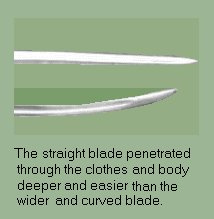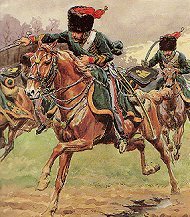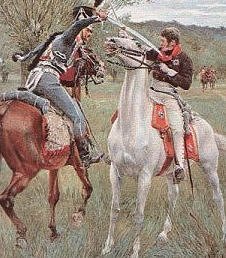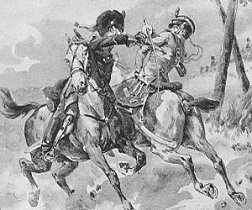Last edited by conon394; November 08, 2013 at 10:40 AM.
IN PATROCINIVM SVB Dromikaites
'One day when I fly with my hands - up down the sky, like a bird'
But if the cause be not good, the king himself hath a heavy reckoning to make, when all those legs and arms and heads, chopped off in battle, shall join together at the latter day and cry all 'We died at such a place; some swearing, some crying for surgeon, some upon their wives left poor behind them, some upon the debts they owe, some upon their children rawly left.
Hyperides of Athens: We know, replied he, that Antipater is good, but we (the Demos of Athens) have no need of a master at present, even a good one.


















 Knife, bayonet, spear, lance and straight-blade saber penetrated through the clothes and body deeper and easier than the curved saber. By the way, approx. 3cm allows penetration of the ribs, and 4cm allows penetration of the heart. According to recent FBI statistics wounds inflicted by knife are very dangerous. Only 10% die from their shot wounds, and as many as 30% die from their knife wounds.
Knife, bayonet, spear, lance and straight-blade saber penetrated through the clothes and body deeper and easier than the curved saber. By the way, approx. 3cm allows penetration of the ribs, and 4cm allows penetration of the heart. According to recent FBI statistics wounds inflicted by knife are very dangerous. Only 10% die from their shot wounds, and as many as 30% die from their knife wounds.  When two cavalrymen were charging each other at greater speed, the advantage was on the side of the cavalrymen with the longer, straight-blade sabers. He could thrust and be far out of reach within a second ! In this very short momemnt it was impossible for his opponent to parry and then cut.
When two cavalrymen were charging each other at greater speed, the advantage was on the side of the cavalrymen with the longer, straight-blade sabers. He could thrust and be far out of reach within a second ! In this very short momemnt it was impossible for his opponent to parry and then cut.  The cuts were delivered either diagonally or horizontaly and were aimed at the face, head and forehand of the adversary. The cut was by far more instinctive blow than the thrust and slash. The men tended to cut even if their sabers were more suited to the thrust !
The cuts were delivered either diagonally or horizontaly and were aimed at the face, head and forehand of the adversary. The cut was by far more instinctive blow than the thrust and slash. The men tended to cut even if their sabers were more suited to the thrust !  Prince Louis Ferdinand (Friedrich Ludwig Christian), the Prussian king's nephew was killed by a thrust to his chest delivered by French hussar Guindey. Parquin writes, "Brushing aside Guindey's weapon, the prince struck Guindey a blow across the face with his saber. He was about the strike a second time when Guindey countered and ran him through the chest. Killed instantly the prince fell from his horse."
Prince Louis Ferdinand (Friedrich Ludwig Christian), the Prussian king's nephew was killed by a thrust to his chest delivered by French hussar Guindey. Parquin writes, "Brushing aside Guindey's weapon, the prince struck Guindey a blow across the face with his saber. He was about the strike a second time when Guindey countered and ran him through the chest. Killed instantly the prince fell from his horse."  "On the 15th July 1812 near Salamanca an English officer, riding behind the scouts of his army, caracoled his horse almost in front of French outposts. "What does that officer want ?" - inquired Marshal Marmont.
"On the 15th July 1812 near Salamanca an English officer, riding behind the scouts of his army, caracoled his horse almost in front of French outposts. "What does that officer want ?" - inquired Marshal Marmont. 






